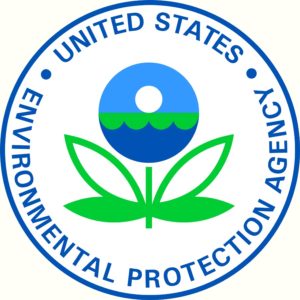The following is text from the US EPA website.

Use of an Alternate Testing Framework for Classification of Eye Irritation Potential of EPA Pesticide Products
Summary
The Office of Pesticide Programs (OPP) is updating and making final an alternative testing approach for assessment of eye irritation potential under the U.S. EPA classification and labeling system. This policy document “Use of An Alternate Testing Framework for Classification of Eye Irritation Potential of EPA Pesticide Products (PDF)” (39 pp, 348k, PDF) replaces the 2009 document “Non-Animals Testing Approach to EPA Labeling for Eye Irritation,” and establishes as final a decision tree approach using three in vitro/ex vivo eye irritation tests:
- Bovine Corneal Opacity and Permeability Assay (BCOP);
- Epiocular Assay (EO); and,
- Cytosensor Microphysiometer Assay (CM).
This alternative testing approach is established for Antimicrobial Products with Cleaning Claims (AMCPs). For other classes of pesticides and pesticide products, the alternative testing approach will be considered on a case-by-case basis.
Objective
The objective of this policy (PDF) (39 pp, 348k, PDF) is to establish the use of an alternative testing approach for assessment of eye irritation potential for AMCPs in general, and for other classes of pesticides and pesticide products on a case-by-case basis. The use of this testing approach is consistent with the Agency’s goal of replacement, refinement, and reduction of animal testing while still providing a scientifically valid approach to eye irritation testing.
Background
In 2009, OPP initiated a pilot program through publication of a document titled “Non-Animal Testing Approach to EPA Labeling for Eye Irritation.” This pilot encouraged antimicrobial pesticide registrants to submit studies on eye irritation for AMCPs using the in vitro and ex vivo testing protocols mentioned above (BCOP, EO, and CM). The purpose of this pilot was to determine whether labeling classification decisions for eye irritation could be made using the approach.
As a result of this pilot program, and based on additional analyses conducted by the Interagency Coordinating Committee on the Validation of Alternative Methods (ICCVAM), the agency is now establishing as science policy the use of this approach for AMCPs in general and for other classes of pesticides and pesticide products on a case-by-case basis.
Scope
OPP has concluded from submission and review of alternative eye irritation tests conducted AMCPs that the testing approach presented in this document is acceptable for determining the appropriate eye hazard classification and labeling for AMCPs. Thus, the testing scheme presented in this document can be used to satisfy the in vivo data requirement for eye irritation in 40CFR Part 158W for AMCPs.
For other classes of pesticides and pesticide products, including conventional, biochemical, and other antimicrobial pesticides not in the scope of those with cleaning claims, the agency will consider alternative tests conducted and submitted on these classes on a case-by-case basis. In these situations, the registrant is encouraged to consult or submit the proposed test protocol to the EPA for review before conducting the study. The acceptability of test results on these other classes will be determined using a weight of evidence approach. That is, the results of the in vitro/ex vivo tests will be considered along with additional information on the chemical, including but not limited to structure-activity relationships and results of in vivo testing of the same or similar chemicals to support a classification under this testing scheme.


